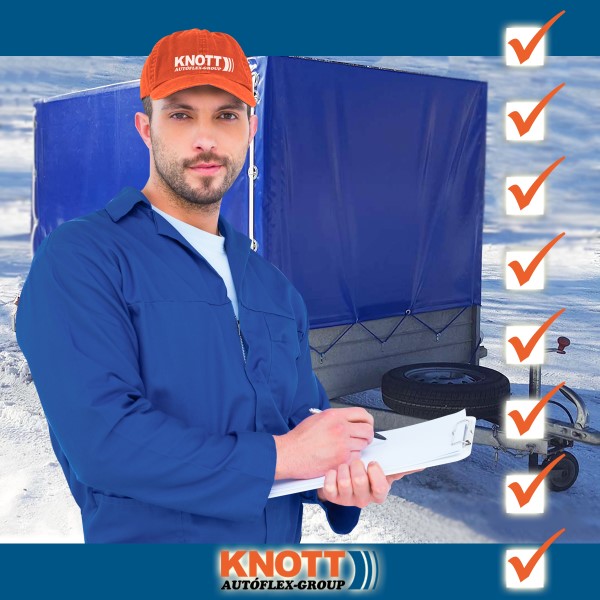One of the nightmares of trailer drivers is when due to a bad manoeuvre the trailer sways the tow-vehicle. It can also occur that in an event of strong braking the trailer almost overtakes the tow-vehicle and in sharp turns it just simply flies off. To avoid accidents like this, it is worth paying special attention to the adjustment and regular maintenance of the trailer brakes. The brake systems manufactured by Autóflex-KNOTT Ltd. are mostly mechanical and have automatic reverse drive built in. You can purchase spare parts for the brake systems at our webshop or call us at +3676502058 or send an email to rendeles@autoflex.hu.

It is a well-known fact that an unbraked trailer drastically increases the braking distance of the entire unit and has a greater chance that it overtakes the tow-vehicle. According to some measurements, the braking distance of braked trailers is 17% shorter than that of an unbraked version. The arguments are therefore clearly in favour of setting up a stable brake system. But how can we be sure of the right settings?
Checking the brake adjustment
Good brakes (and of course good braking adjustment) are important in summer, but especially in winter, so that the trailer does not shove the car “far” out.
Steps for adjusting the brake:
- Raise the trailer so that all of its wheels are in the air at the same time. (whether we are talking about 2, 4 or 6-wheeled vehicles)
- Loosen all physical connections that are involved in the brake process: brake rod, brake cable. During the procedure check their condition as well.
- Wiggle the adjusting screw on the back of the brake plate (the inner side of the vehicle) and turn it clockwise until the wheel is no longer able to rotate.
- Slowly rewind the screw while gently tapping. Do this until the rotation of the wheel becomes unobstructed. We might hear a bit that the pad sometimes touches the brake drums.
- In the meantime, pull on the brake cable to check that it moves freely. If it gets stuck and it does not improve with lubrication, replace it immediately, as a cable costing a few thousand forints will almost immediately damage the brakes costing tens of thousands of forints.
- Fasten the brake cables.
- Last but not least: the brake rod. Its movement lengthwise must not exceed 1-2 mm. But the point is not the lengthwise play of the brake rod. Observe how the overrun lever (where the brake cable is attached) moves in the overrun device. Of course, it must rotate freely on its own axle, otherwise the brake may jam. The vital part is at the upper half where the overrun lever meets the towing shaft. Here even a 1 mm gap is a lot. If this gap is large, during operation (during start up and braking) the brake produces a banging sound. This is not necessarily the fault of the gas spring in the overrun device (spring cylinder).
- It is important to emphasize again that you should always start the brake adjustment with turning he brake adjustment screw on the rear side of the brake plate. (Except in the case of automatic adjustments. In this case a large yellow sticker is affixed to this axle as a warning with ANS inscription as well as a “Knott auto adjust” label on the dust cap.)
We have reached the end of the correct adjustment of the brakes of the trailer. You can prevent major expenses on repairs and even accidents by inspecting the brakes at least twice a year.
If you need any Autóflex-KNOTT brakes or brake parts, you can purchase them in our webshop or order them at rendeles@autoflex.hu or at our domestic sales line +3676502058.



